low-wage service sector
description: industries that provide services rather than goods and generally pay lower wages, often without benefits or job security
38 results
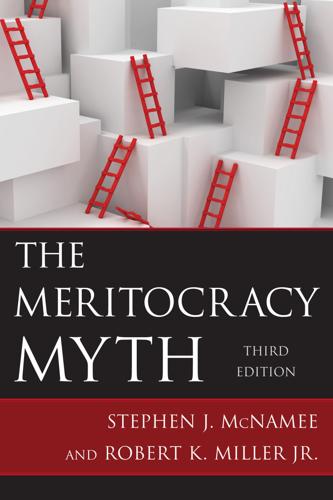
The Meritocracy Myth
by
Stephen J. McNamee
Published 17 Jul 2013
In America, the stories are private, based on the individual, not social or based on institutional contexts. (2001, 70–71) The American economy has been transformed from auto, steel, and oil to fast food, day care, and shopping malls. Table 6.1 shows the Department of Labor’s projection of the twenty-five fastest-growing jobs in America that will produce the most new job slots between 2010 and 2020. With few exceptions, most of these “growth jobs” are in the low-wage service sector. Included in the list are low-paid service jobs such as food preparation and service workers, retail sales representatives, cashiers, office clerks, personal and home care aides, home health aides, janitors and cleaners, nursing aides and orderlies, waiters and waitresses, landscaping and groundskeeping workers, receptionists and information clerks, maids and housekeepers, and child-care workers.
…
In 1970, women made up 38 percent of the U.S. labor force; by 2010, women made up 47 percent of the total labor force, about parity with men (U.S. Department of Labor 2011). Although the level of female participation in the labor force is now almost equivalent to that of men, women are not equally spread out within the labor force. In particular, women are highly concentrated in the mostly low-wage service sector of the economy. While there has been a steady decline in occupational segregation, there is still a substantial amount of sex-based occupational segregation in the labor force (Stainback and Tomaskovic-Devey 2012). For instance, in 2010, women comprised 96 percent of secretaries and administrative assistants, 97 percent of preschool and kindergarten teachers, 91 percent of registered nurses, 95 percent of dental hygienists, 95 percent of child-care workers, 93 percent of receptionists and information clerks, and 91 percent of booking, accounting, and auditing clerks, just to name a few (U.S.
…
A nurse, for instance, may aspire to be head nurse, but there are few rungs on the advancement ladder beyond that. Even if one is an especially skilled and competent nurse, the head nurse on the floor may also be competent, forty years old, and going nowhere. Many pink-collar jobs are disproportionately located in the low-wage service sector of the economy. The jobs themselves are insecure, and those who hold them face higher-than-average risks of irregular employment, involuntary part-time work, and layoffs or firing. These jobs typically carry limited fringe benefits, and some require shift work. Pink-collar jobs and the industries in which they are located are typically not unionized; therefore, workers do not benefit from protections won by the collective power of unions.

Essential: How the Pandemic Transformed the Long Fight for Worker Justice
by
Jamie K. McCallum
Published 15 Nov 2022
I soon understood that whatever thin social contract held the American workplace together had been virtually shredded overnight. My research agenda quickly shifted in scope from the global to the national, starting in US healthcare and eventually working my way through education, food services, retail, and other low-wage service sectors, including logistics, leisure, and hospitality, the industries that defined essential work. In the end I surveyed over seven hundred essential workers and conducted in-depth interviews with about one hundred others. The surveys asked about working conditions, political beliefs, and experience with unions.
…
Gig workers are functionally servants: they can act as your personal chauffeur, bring you dinner, do your grocery shopping, and assemble your furniture, all while the impersonal, app-based transaction lets you hire them without having to assume normal employer burdens, like safeguarding workers’ rights. The historic growth of this low-wage servant economy characterized the labor market during both the Obama and Trump administrations. The advent of a low-wage economy alongside service sector growth presents the impression that these phenomena are inherently intertwined. We’re nostalgic for manufacturing employment, which is imagined to be, by default, solid, well-paid work. Such logic suggests there is nothing that policymakers can do to change the poor conditions of service jobs—it’s just the inevitable result of deindustrialization.
…
Workers of color faced delayed recovery too. All in all, the record gains Black workers made in the decade after the Great Recession were wiped out in the first few months of the pandemic. People of color and women lost their jobs at higher rates because they were overconcentrated in the low-wage service sector, where everyone is treated as disposable. But how did they get there in the first place? One possibility is that the progress Black workers had made since the 1980s was redirected by the explosion of low-wage service jobs in healthcare and other personal services after 2000.36 This process tended to drive down wages by “crowding” marginalized workers into particular occupational categories.37 These same groups are “crowded out” from better-paying occupations too.
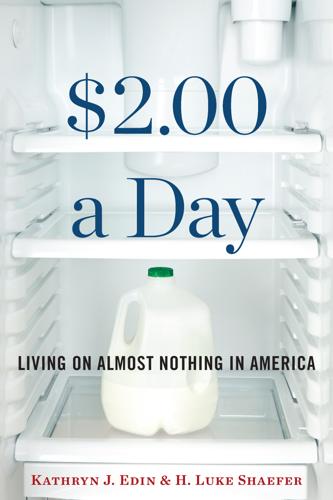
$2.00 A Day: Living on Almost Nothing in America
by
Kathryn Edin
and
H. Luke Shaefer
Published 31 Aug 2015
She was summarily dismissed, given no benefit of the doubt, despite her years of service and the small amount of money involved. “Ten dollars short, and they found it after they fired me,” she says. But no call of apology came, no invitation to return to work. That’s when things really started to fall apart. Modonna was approved for unemployment insurance, which is fairly rare among low-wage workers in the service sector, where low earnings and unstable work hours can make it hard to meet the program’s eligibility criteria. She knows she was lucky in this regard. But her benefits—which didn’t begin to approach what she was making at Stars—weren’t enough to cover the cost of her rent. She fell behind, and her landlord, usually willing to work with a tenant in a tough situation, used the opportunity to get rid of a troublemaker.
…
Even if she were to find another job before the subsidy lapsed, how could she possibly make enough to cover the full cost of the rent with her wages alone? Jennifer’s circumstances are not rare. About one in four jobs pays too little to lift a family of four out of poverty. Low-wage workers are concentrated in the service sector; the typical American experiences direct benefit from their labor. Like Jennifer at Chicago City, some are all but invisible to the nine-to-five professional worker or daytime shopper. Others are constantly interacting with people, taking lunch orders, selling groceries or clothing, or caring for the elderly in nursing homes.
…
If fewer customers are coming in on Sundays, they can cut the number of cashiers who clock in on that day or send them home early. The basic strategy behind these practices explains why wide scheduling availability across days and times has become the key qualification for getting and keeping a low-wage service sector job. Work schedules are often variable, meaning that the days and times you are required to work can shift from day to day or week to week. To get enough hours at any given job, an employee has to be flexible. But such flexibility often means relying on a patchwork of child care arrangements.

The New Class Conflict
by
Joel Kotkin
Published 31 Aug 2014
While middle-class incomes have fallen relative to the upper-income groups, house prices and the costs of health insurance, utilities, and college tuition have all soared.7 This reflects some very dramatic changes in the nature of the employment market. For over a decade, job gains have been concentrated largely in the low-wage service sector, such as in retail or hospitality, which alone accounted for nearly sixty percent of job gains; in contrast middle-income positions actually have been declining. Meanwhile, taxes on corporate profits, which are at an all-time high, have fallen to near historic lows.8 This trend has continued even in the recovery.
…
They increasingly constitute, as journalist Simon Kuper puts it, “the vast gated communities where the one percent reproduces itself.”18 The Changing Economy of Cities Compared to the early capitalist cities of the early nineteenth century, or the industrial city or the postwar mass-market cities, the primary sectors now driving key urban areas—high technology, media, and financial services—are far less reliant on the mass mobilization of labor, both skilled and unskilled.19 At the same time, formerly higher-wage blue- and white-collar employment has shifted to the suburbs or smaller cities.20 In the wake of the middle-class exodus, many urban areas now have a two-tier salary structure: the high-wage sector at the top and the generally low-wage service sector. The great winnowing of the less affluent caused by ultra-high prices and the proliferating use of unpaid interns has even affected the creative class itself. Musician Patti Smith laments, “New York has closed itself off to the young and the struggling. New York City has been taken away from you.”21 But it’s not just artists who are affected; even professionals like airline pilots generally avoid postings in New York (only Detroit does worse in this respect) due to the high cost of living.

The New Division of Labor: How Computers Are Creating the Next Job Market
by
Frank Levy
and
Richard J. Murnane
Published 11 Apr 2004
Thus, our Simon-esque prediction is that the major consequence of computerization will not be mass unemployment, but a continued decline in the demand for moderately skilled and less skilled labor. Job opportunities will grow, but job growth will be greatest in higher skilled occupations in which computers complement expert thinking and complex communication to produce new products and services. At the same time, more moderate expansion will occur in low-end, low-wage service sector jobs. This declining demand for less skilled labor was implicit in Simon’s 1960 predictions and some years later was given a modern face by economist Gary Burtless. In 1990, Burtless assessed the fear that the U.S. job market would become dominated by low-skilled, low-wage work. His conclusion turned that fear on its head.

Digital Dead End: Fighting for Social Justice in the Information Age
by
Virginia Eubanks
Published 1 Feb 2011
A family with two children and two full-time earners, both working at minimum-wage jobs, will make $29,000 a year before taxes, too much to qualify for federal assistance available to those below the poverty line ($22,050 for a family of four) but too little to be able to afford health care, child care, or savings for education or emergencies. If growth in the low-wage service sector continues to be a primary feature of the information economy, too many full-time workers will remain working poor. As Annette Bernhardt and Christine Owens argued in their 2009 Nation article, “Rebuilding a Good Jobs Economy,” we are presented with a unique opportunity in the current global financial crisis.

When Work Disappears: The World of the New Urban Poor
by
William Julius Wilson
Published 1 Jan 1996
No other male ethnic group in the inner city experienced such an overall precipitous drop in manufacturing employment (see Appendix C). These employment changes have accompanied the loss of traditional manufacturing and other blue-collar jobs in Chicago. As a result, young black males have turned increasingly to the low-wage service sector and unskilled laboring jobs for employment, or have gone jobless. The strongly held U.S. cultural and economic belief that the son will do at least as well as the father in the labor market does not apply to many young inner-city males. If industrial restructuring has hurt inner-city black workers in Chicago, it has had serious consequences for African-Americans across the nation.
…
Although our data suggest that inner-city blacks, especially African-American males, are experiencing increasing problems in the labor market, the reasons for those problems are seen in a complex web of interrelated factors, including those that are race-neutral. The loss of traditional manufacturing and other blue-collar jobs in Chicago resulted in increased joblessness among inner-city black males and a concentration in low-wage, high-turnover laborer and service-sector jobs. Embedded in ghetto neighborhoods, social networks, and households that are not conducive to employment, inner-city black males fall further behind their white and Hispanic counterparts, especially when the labor market is slack. Hispanics “continue to funnel into manufacturing because employers prefer Hispanics over blacks and they like to hire by referrals from current employees, which Hispanics can readily furnish, being already embedded in migration networks.”

Two Nations, Indivisible: A History of Inequality in America: A History of Inequality in America
by
Jamie Bronstein
Published 29 Oct 2016
Time in prison and out of the labor force translates into fewer skills, an even lower wage, and tremendous difficulties in actually getting hired.63 GLOBALIZATION AND FREE TRADE While incarceration of young black men caused the statistical illusion that inequality was slowing in America in the 1990s, the jobs available were becoming more polarized into high-wage management jobs and low-wage service sector jobs with no hope of serving as a stepping stone to a middle-class career.64 During the 1980s, improvements in communications technology and the expansion of “big box” stores like Walmart and Target provided greater markets in the United States for goods either produced or finished inexpensively overseas.

The Vanishing Middle Class: Prejudice and Power in a Dual Economy
by
Peter Temin
Published 17 Mar 2017
But one of Flint’s emergency managers was rewarded by being put in charge of Detroit’s schools—of which more discussion will follow later—a position he resigned from after the Flint scandal broke.22 The governor and the managers, all from the FTE sector, did not consider the health of the black low-wage residents of Flint in making decisions about public services. The FTE sector representatives wanted to limit their taxes instead of preserving the infrastructure of Flint and guaranteeing good water quality. The Lewis model asserts that the FTE sector wants to keep incomes low in the low-wage sector, and that includes lowering the quality of public services in the low-wage sector.

The Problem With Work: Feminism, Marxism, Antiwork Politics, and Postwork Imaginaries
by
Kathi Weeks
Published 8 Sep 2011
Mills 1951, 138), the practice of hailing a wide range of workers as professionals also serves to cash in on the term’s cachet and encourage employees to identify with jobs further up the labor hierarchy. To recall Weber’s description of the Protestant work ethic, according to which all waged workers were expected to approach their work industriously as if it were a calling, those in low-waged service-sector jobs under post-Fordism are asked to approach their work professionally as if it were a “career.” This professionalization of work, the expansion of what is considered a profession and, more important, the number of workers who are expected to “be professional” is one way this disciplinary subjectification is extended both up and down the labor hierarchy in a post-Taylorist age.

The New Class War: Saving Democracy From the Metropolitan Elite
by
Michael Lind
Published 20 Feb 2020

Democracy and Prosperity: Reinventing Capitalism Through a Turbulent Century
by
Torben Iversen
and
David Soskice
Published 5 Feb 2019
Trade facilitates specialization in lines of production in which companies have a comparative advantage because of the institutional framework. Trade therefore also entrenches and facilitates cross-national differences in institutions, and this is reinforced by foreign direct investment. We see more tendencies toward convergence in nontraded, low-wage service sectors where flexibilization of labor contracts is a common trend in the past two decades. Still, most evidence confirms that there have not been races to the bottom in redistribution or corporate tax rates. Moreover, in all these cases differential outcomes are determined in our analysis by domestic political coalitions.

Your Computer Is on Fire
by
Thomas S. Mullaney
,
Benjamin Peters
,
Mar Hicks
and
Kavita Philip
Published 9 Mar 2021
Pilots of Jet Airways, one of the major airlines, formed a union following the layoff of two thousand members of the cabin crew, who were later reinstated. However, service staff such as cabin and ground crew are not unionized. In a global context, it is worth noting that in the United States, about 60 percent of the jobs added since 2010 have been in low-wage service sector jobs and not in “knowledge work.”32 Protestors have gathered in Seattle, Berlin, and other places to protest against the tech giant Amazon, whose warehouse workers are subject to surveillance and harsh conditions that include surveillance devices strapped on to their bodies and to peeing in bottles instead of taking bathroom breaks.
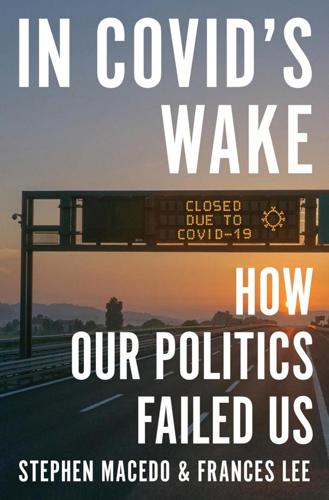
In Covid's Wake: How Our Politics Failed Us
by
Stephen Macedo
and
Frances Lee
Published 10 Mar 2025
This surge in unemployment represented considerable stress and 182 chapter 6 16.0 14.0 12.0 10.0 8.0 6.0 4.0 2.0 Jan 1 1948 Dec 1 1949 Nov 1 1951 Oct 1 1953 Sep 1 1955 Aug 11957 Jul 1 1959 Jun 1 1961 May 1 1963 Apr 1 1965 Mar 1 1967 Feb 1 1969 Jan 1 1971 Dec 1 1972 Nov 1 1974 Oct 1 1976 Sep 1 1978 Aug 11980 Jul 1 1982 Jun 1 1984 May 1 1986 Apr 1 1988 Mar 1 1990 Feb 1 1992 Jan 1 1994 Dec 1 1995 Nov 1 1997 Oct 1 1999 Sep 1 2001 Aug 12003 Jul 1 2005 Jun 1 2007 May 1 2009 Apr 1 2011 Mar 1 2013 Feb 1 2015 Jan 1 12017 Dec 1 2018 Nov 1 2020 Oct 1 2022 0.0 figure 6.3. Unemployment rate, seasonally adjusted, 1948–2023. Source: Federal Reserve Bank of St. Louis. turmoil in the personal lives of millions of Americans, even if the recovery began almost immediately. Rises in unemployment w ere most pronounced among low-wage, service-sector workers, particularly among women. Although pandemic aid programs eventually offset income losses among t hose who lost jobs during the pandemic, many workers had to wait several months before receiving their unemployment benefits from overwhelmed state systems.50 Furthermore, involuntary job losses often have “scarring effects” that reduce long-term earnings.51 Meanwhile, higher-paid workers were less likely to lose their jobs.

The Origins of the Urban Crisis
by
Sugrue, Thomas J.
The urban crisis is jarringly visible in the the shattered storefronts and fire-scarred apartments of Chicago’s South and West Sides; the rubble-strewn lots of New York’s Brownsville, Bedford-Stuyvesant, and South Bronx; the surreal vistas of abandoned factories along the waterfronts and railways of Cleveland, Gary, Philadelphia, Pittsburgh, and Saint Louis; the boarded-up and graffiti-covered houses of Camden, Baltimore, and Newark. Rates of poverty among black residents of these cities all range from 25 to 40 percent. With a few exceptions, all have witnessed a tremendous loss in manufacturing jobs and the emergence of a low-wage service sector. Almost all of these cities, as Douglas Massey and Nancy Denton have argued, “have large ghettos characterized by extreme segregation and spatial isolation.” The faces that appear in the rundown houses, homeless shelters, and social agencies in these urban wastelands are predictably familiar.
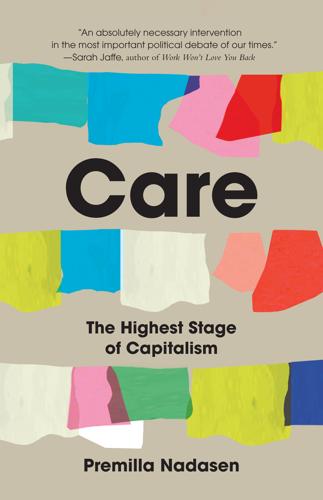
Care: The Highest Stage of Capitalism
by
Premilla Nadasen
Published 10 Oct 2023
The working class was always diverse, but, since the 1970s, with the rise of the service sector, a greater portion of the working class in the US is people of color, white women, and immigrant workers. Sociologist Evelyn Nakano Glenn has tracked the movement of women of color out of paid household labor into the low-wage institutionalized service sector after World War II.32 She argues that certain groups of women of color who left domestic work, especially African American women, ended up doing very similar labor in hospitals, schools, laundries, and restaurants. Cities once dominated by manufacturing are now hubs of service work.

Rule of the Robots: How Artificial Intelligence Will Transform Everything
by
Martin Ford
Published 13 Sep 2021
Historically, labor market technological disruptions have tended to impact on a sector-by-sector basis. Agricultural mechanization destroyed millions of jobs, but a rising manufacturing sector was available to eventually absorb those workers. Likewise, as manufacturing automated and factories offshored to low-wage countries, a rapidly growing service sector provided opportunities for the displaced workers. In contrast, artificial intelligence will impact every sector of the economy more or less simultaneously. Most importantly, this will include the service sector and white collar jobs that now engage the vast majority of the U.S. workforce.
…
In the U.S., the Gini coefficient rose from 37.5 in 1986 to 41.4 in 2016—a level higher than any previously recorded.10 Figure 3. Productivity vs. Compensation This trajectory toward rising income inequality has been driven in part by a general decline in the quality of jobs on offer in the United States. In recent decades, American job creation has been weighted increasingly toward low-wage jobs in the service sector. These jobs, in areas like retail sales, food preparation and serving, security and cleaning or janitorial jobs in offices and hotels, provide minimal incomes and few if any benefits, and are often less than full-time with unreliable hours. The rise of the gig economy, in which workers receive payments based on a task-completion basis with virtually no guarantee of a predictable income and little or no access to the legal safeguards provided to other workers, has further exacerbated the trend.

Chavs: The Demonization of the Working Class
by
Owen Jones
Published 14 Jul 2011

A Brief History of Neoliberalism
by
David Harvey
Published 2 Jan 1995
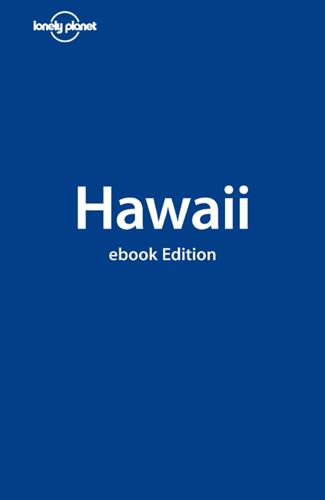
Hawaii
by
Jeff Campbell
Published 4 Nov 2009
Agriculture accounts for less than 1% of Hawaii’s gross domestic product, but reviving small farms is seen as an essential aspect of building a sustainable economy – one that could literally feed itself. Hawaii is also looking to attract clean energy and high-tech industries as a way to diversify, since the state recognizes that continued growth in tourism (and more low-wage service sector jobs) no longer supports Hawaii’s long-term health. Return to beginning of chapter POPULATION Over 70% of Hawaii’s 1.3 million residents live on O’ahu, making Honolulu Hawaii’s only real city. On O’ahu, population density is nearly 1500 people per sq mile, compared with 109 on Maui and 37 on the Big Island.
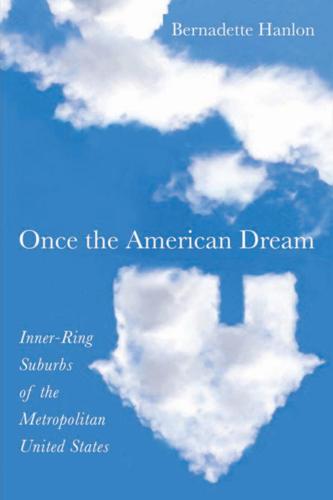
Once the American Dream: Inner-Ring Suburbs of the Metropolitan United States
by
Bernadette Hanlon
Published 18 Dec 2009
Typically, these suburbs experienced substantial growth in the number of foreign-born residents; the population of these suburbs grew, but mostly because of an in-migration of primarily Hispanic immigrants. This population shift occurred in the inner-ring suburbs of Alondra Park and Hawthorne in the Los Angeles metropolitan area, West Sacramento in Yolo, and North Miami Beach in Miami. Poorer immigrants entered these inner-ring communities in recent decades, typically working in low-wage jobs in the service sector. The social status of these suburbs changed dramatically as a result. Thomas Cooke and Sarah Marchant (2006) similarly find an increase in highpoverty neighborhoods among inner-ring suburbs of metropolitan areas in California and other Sun Belt states because of rapid growth in the immigrant population.
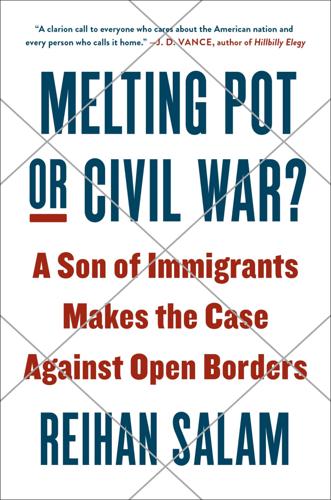
Melting Pot or Civil War?: A Son of Immigrants Makes the Case Against Open Borders
by
Reihan Salam
Published 24 Sep 2018
That’s one reason low-skill immigrants are so much more geographically mobile in the wake of a recession than low-skill natives.29 At the very moment that large swaths of America’s existing working class was reckoning with the downsides of offshoring, the United States welcomed an entirely new immigrant working class, which was more geographically flexible and more desperate to get on the bottom rungs of the service economy. We didn’t welcome quite enough immigrants to compete with low-wage labor in China, mind you. But we did invite enough to greatly expand the potential supply of service workers, and to prop up old low-wage business models in the service sector and create entirely new ones. And, as I have alluded to before, low-skill immigration increases the number of people who are most vulnerable to displacement. No one knows exactly where technology will take us in the years to come. What we can say with some confidence is that the jobs and skills that are least vulnerable to automation are those that require a fair bit of education and strong communication skills.

Off the Books
by
Sudhir Alladi Venkatesh
Some of these women also work as psychics, tax preparers, wedding consultants, and hairstylists. The remaining underground workers are in the illicit sectors. One is a local conduit for welfare recipients wishing to sell their food stamps to businesses for cash. Along with Bird, another neighbor, Cotton, is a prostitute. Unlike Bird, however, who came to prostitution from low-wage but legal service sector work (and plans to return someday), Cotton has not had work experience in the legal economy and has no desire to leave her street trade. Cotton says, "I'm fine where I am. My next job is taking care of my man, not serving no burgers or cleaning no toilets." Two women help traffic in narcotics—one "rents" her apartment to gang members and drug dealers as a place where they can process and package cocaine and heroin, the other is a lookout for the local gang.

Creating Unequal Futures?: Rethinking Poverty, Inequality and Disadvantage
by
Ruth Fincher
and
Peter Saunders
Published 1 Jul 2001
Few landed good ones, however, and many exited quickly from the jobs they found’ (1998b, p. 16). 220 PDF OUTPUT c: ALLEN & UNWIN r: DP2\BP4401W\MAIN p: (02) 6232 5991 f: (02) 6232 4995 36 DAGLISH STREET CURTIN ACT 2605 220 BEYOND IMPOVERISHED VISIONS OF THE LABOUR MARKET With minimal access to training, high job turnover and negligible prospects for career advancement, it is not surprising that low-wage sectors have very low productivity. Again, the US is instructive. The emergence of a large pool of low-wage jobs in the service sector has had a serious and adverse impact on productivity growth. In the US, manufacturing productivity growth between 1979 and 1990 was 2.9 per cent, and between 1990 and 1996, it was 4.2 per cent. In non-manufacturing, it was 0.3 per cent and 0.2 per cent, respectively. These latter growth rates were a tenth of those prevailing in German non-manufacturing over the same period (Brenner 1998, p. 241).
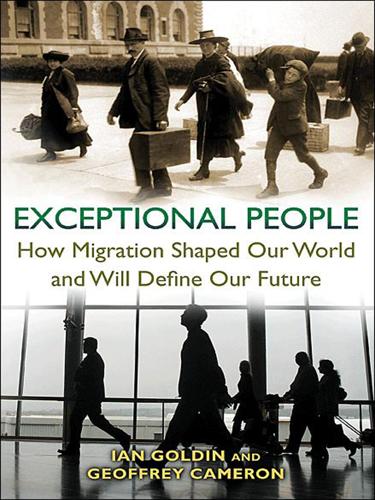
Exceptional People: How Migration Shaped Our World and Will Define Our Future
by
Ian Goldin
,
Geoffrey Cameron
and
Meera Balarajan
Published 20 Dec 2010

Rise of the Robots: Technology and the Threat of a Jobless Future
by
Martin Ford
Published 4 May 2015
At least in the United States, the fast food market is already so saturated that it seems very unlikely that new restaurants could make up for such a dramatic reduction in the number of workers required at each location. And this, of course, would mean that a great many of the job openings forecast by the Bureau of Labor Statistics might never materialize. The other major concentration of low-wage service jobs is in the general retail sector. Economists at the Bureau of Labor Statistics rank “retail salesperson” second only to “registered nurse” as the specific occupation that will add the most jobs in the decade ending in 2020 and expect over 700,000 new jobs to be created.22 Once again, however, technology has the potential to make the government projections seem optimistic.

The Alternative: How to Build a Just Economy
by
Nick Romeo
Published 15 Jan 2024
In June of 2022, A&H completed its first two transactions, converting Colorado-based Apex Plumbing and Texas-based Accent Landscape Contractors into 100 percent ESOPs. Apex has about 50 employees, half of whom are Latino, while Accent has around 120 employees, a majority of whom are hourly low-wage Latino workers. Focusing on essential service sectors such as landscaping, plumbing, food processing, commercial cleaning, health care, and transportation, A&H targets companies with at least 40 employees, where at least one-third of the workforce consists of people of color. They aim to generate for all workers an average retirement savings of between $70,000 and $120,000 over a five-year period.

EuroTragedy: A Drama in Nine Acts
by
Ashoka Mody
Published 7 May 2018
German labor productivity in manufacturing increased steadily by 1 percent a year from the early 1980s through the early 2000s, a rate comfortably above that in US manufacturing. And Germany’s highly productive manufacturing workers largely maintained their privileged, high-wage positions. In contrast, much of the short-term German employment at low wages was in service sectors, where productivity growth fell behind the productivity growth in German manufacturing and relative to the service sectors of other advanced economies.120 Italian manufacturing companies invested little in innovation and worker training. The Jobs Act took them off the hook once again, since the firms now had the option of muddling along by paying lower wages to their workers.

Palo Alto: A History of California, Capitalism, and the World
by
Malcolm Harris
Published 14 Feb 2023
In a sequence that I find hard to interpret other than as an act of collective punishment for the uprisings of the 1960s and early ’70s, California’s informally segregated, formally choked-of-funds public schools no longer prepared black and Hispanic students for the tertiary education required for technology jobs of any collar. Assembly-line managers preferred foreign-born workers, who had fewer rights than their American-born colleagues. Members of the region’s black working class found themselves, like an increasing share of the population in general, boxed into the low-wage service and informal sectors of employment. In a documentary, one man who grew up in the 1970s in LA recounts that after graduating he planned to go to a technical school, as some of his classmates did, but his inability to read put a hard block on his continued education.29 Rick Ross became the West Coast’s most infamous independent cocaine distributor instead.vi Coffee and cocaine had a lot in common for the Bay Area tech milieu: Both came from the Americas as part of the restructuring of Third World economies toward consumable exports; both were increasingly available at several price points; and both made people go fast for long periods of time.

What Would the Great Economists Do?: How Twelve Brilliant Minds Would Solve Today's Biggest Problems
by
Linda Yueh
Published 4 Jun 2018
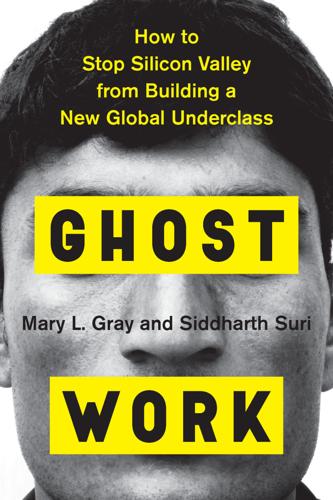
Ghost Work: How to Stop Silicon Valley From Building a New Global Underclass
by
Mary L. Gray
and
Siddharth Suri
Published 6 May 2019

Power and Progress: Our Thousand-Year Struggle Over Technology and Prosperity
by
Daron Acemoglu
and
Simon Johnson
Published 15 May 2023
Second, minimum wages can have only a small role in countering the excessive power of big business and labor markets. Most importantly, if the direction of technology remains distorted toward automation, higher minimum wages may backfire. As evidence from the COVID pandemic shows, when workers are not available to take jobs at relatively low wages in the hospitality and service sectors, companies have a powerful incentive to automate work. Hence, in the age of automation, minimum wages can have unintended consequences—unless accompanied by a broader redirection of technology. This motivates our perspective that the minimum wage is most useful as part of a broader package aimed at redirecting technology away from automation.

Planet of Slums
by
Mike Davis
Published 1 Mar 2006
As the authors of 1 Patrick Chamoiseau, Texaco, New York 1997, p. 314. 2 See my Late Victorian Holocausts: Til Nino Famines and the Making of the Third World, London 2001, especially pp. 206-09. The Challenge of Slums conclude: "Instead of being a focus for growth and prosperity, the cities have become a dumping ground for a surplus population working in unskilled, unprotected and low-wage informal service in^^triesand trade." "The rise of [this] informal sector," they declare bluntly, "is ... a direct result of liberalization." Some Brazilian sociologists call this process — analogous to the semi-proletarianization of landless peasants — passive proletarianisation, involving the "dissolving of traditional forms of (re)production, which for the great majority of direct producers does not translate into a salaried position in the formal labor market."3 This informal working class, without legal recognition or rights, has important historical antecedents.

Them And Us: Politics, Greed And Inequality - Why We Need A Fair Society
by
Will Hutton
Published 30 Sep 2010

Shocks, Crises, and False Alarms: How to Assess True Macroeconomic Risk
by
Philipp Carlsson-Szlezak
and
Paul Swartz
Published 8 Jul 2024

MegaThreats: Ten Dangerous Trends That Imperil Our Future, and How to Survive Them
by
Nouriel Roubini
Published 17 Oct 2022

Make Your Own Job: How the Entrepreneurial Work Ethic Exhausted America
by
Erik Baker
Published 13 Jan 2025
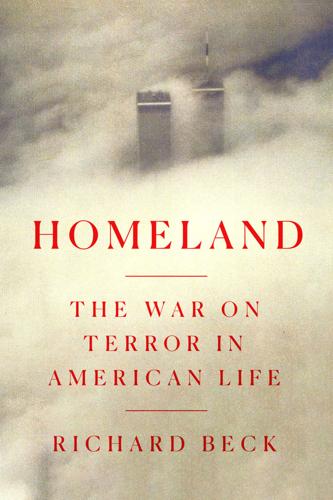
Homeland: The War on Terror in American Life
by
Richard Beck
Published 2 Sep 2024